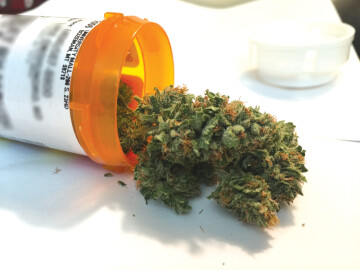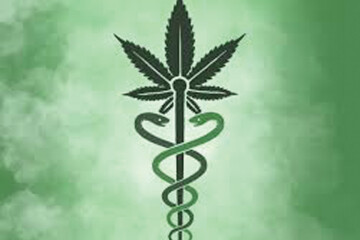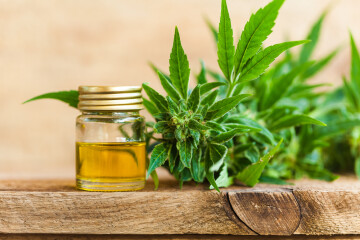The Science of Medical Cannabis

I could engage readers in my robust Medical Cannabis policy rhetoric for thousands of words, but all I have for you this month is science…
The effects produced by Cannabis are reported to have the same quality despite route of administration. In studies, “abuse potential was unaffected by the decrease in positive subjective effects,” indicating that Cannabis related subjective effects and self-administration are separable. Accounting for the route by which the drug is taken, amount of plant ingested, and experience of the individual user; actual epidemiological data reveals that Cannabis has a low to moderate potential for abuse (Holland 2010).
The earliest evidence of Cannabis as a sacrament lies at the discovery site of a smoking cup found in gravesites of Proto-Indo Europeans (Romania five thousand years ago) that contained remnants of charred hemp seed documenting that “three thousand years before Christ humanity had already been using Cannabis for religious purposes for a millennia.” In Julie Holland’s 2010 review of Cannabis’ guide to Its role in Medicine, Politics Science and Culture she further states, “It was a food, a fiber a medicine, and a magically empowered religious sacrament.”
As a fiber plant Cannabis produces some of the best and most durable fibers of natural origin, historically used to produce ropes and sails for sea ships, paper, bank notes, even the first pair of Levi’s jeans. Modern applications include dashboards for expensive cars, and insulation. Interestingly THC (one of over 70 known cannabinoids) is a terpenophenolic compound. Terpenophenolics are unusual natural products of mixed biosynthetic origin. Despite being a relatively small group of plant metabolites, terpenophenolics have biological activities that make them important for human health. They contain no nitrogen atom therefore are not alkaloids – a rare trait among active psychotropic compounds. Therapeutically used THC is among the most non polar compounds used in medicine today (Hazenkamp 2009). An extensive review of the history of Cannabis has recently been published by E.B. Russo called History of Cannabis and Its Preparations in Saga, Science and Sobriquet Chemistry and Biodiversity 2007.
The contents described in the table below all have been described as a constituent of some preparation of Cannabis however the source of these preparations were often uncontrolled. Some of these compounds could be considered artifacts resulting from oxidation or some other degradation of the plant material. THC in fact itself is not produced by the metabolism of the Cannabis plant but rather is formed by thermal loss of C02 of THCA. A more modern suggested definition of these compounds places more emphasis on synthetic chemistry and pharmacology. The chemical composition of any Cannabis sample depends not only on biosynthetic composition, but also factors such as age, conditions of storage, and methods of extraction: All factors that can be regulated and well controlled with a proper system in place, and all factors that are not controlled on the black market. Cannabinoids, terpenoids, flavinoids, and fatty acids (hemp oil) comprise the most interesting classes of biologically active compounds. It is often said that cannabinoids are a unique compound found only in Cannabis plants however there are studies suggesting homology of genes from the cannabinoid in at least some other species (Hazenkamp 2009).
It is now known by the scientific community that cannabinoid receptors can be found in most parts of the brain, the immune system as well as a variety of other organs. Their distribution explains many of the biological effects of cannabis consumption. DiMarzo et al summarized the effects as follows, endocannabinoids make you “feel less pain, control your movement, relax, eat, forget, sleep and protect your neurons” (1998). An understanding of this endogenous system explains the effects of cannabis on human physiology, and that can only come from research. To find out more, this website has everything you need to know.
An overview of compounds found in the Cannabis plant
Type of compound # of Compounds Identified
Terpenoids …………………………………………………. 120+
Cannabinoids ……………………………………………… 70+
Hydrocarbons ……………………………………………… 50
Sugars and related compounds ……………………. 34
Nitrogenous compounds ……………………………… 27
Non cannabinoid phenols ……………………………. 25
Flavinoids …………………………………………………… 23
Fatty acids ………………………………………………….. 22
Simple acids ……………………………………………….. 21
Amino acids ……………………………………………….. 18
Simple keytones …………………………………………. 13
Simple esters and lactones ………………………….. 13
Simple aldehydes ……………………………………….. 12
Proteins, glyco proteins, and enzymes ………… 11
Steroids ……………………………………………………… 11
Elements ……………………………………………………. 9
Simple alcohols …………………………………………… 7
Pigments …………………………………………………… 2
Vitamin K …………………………………………………… 1
Carley Rae is a registered caregiver in the state of MT. The views expressed here are solely hers and not a reflection of the views of her employer. As always she is delighted to receive all questions, comments, and lively rhetoric at peacefulproviderpr@gmail.com

